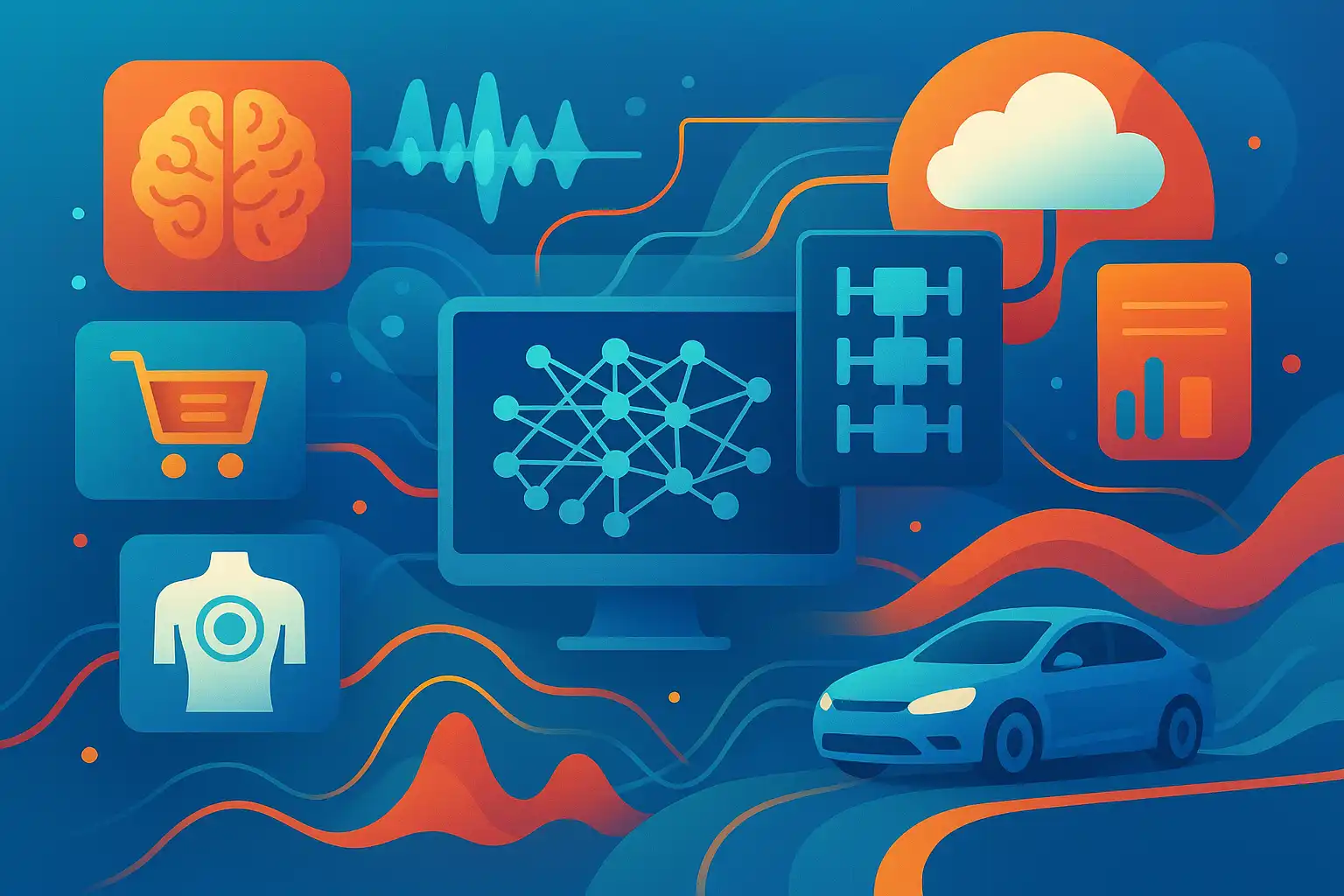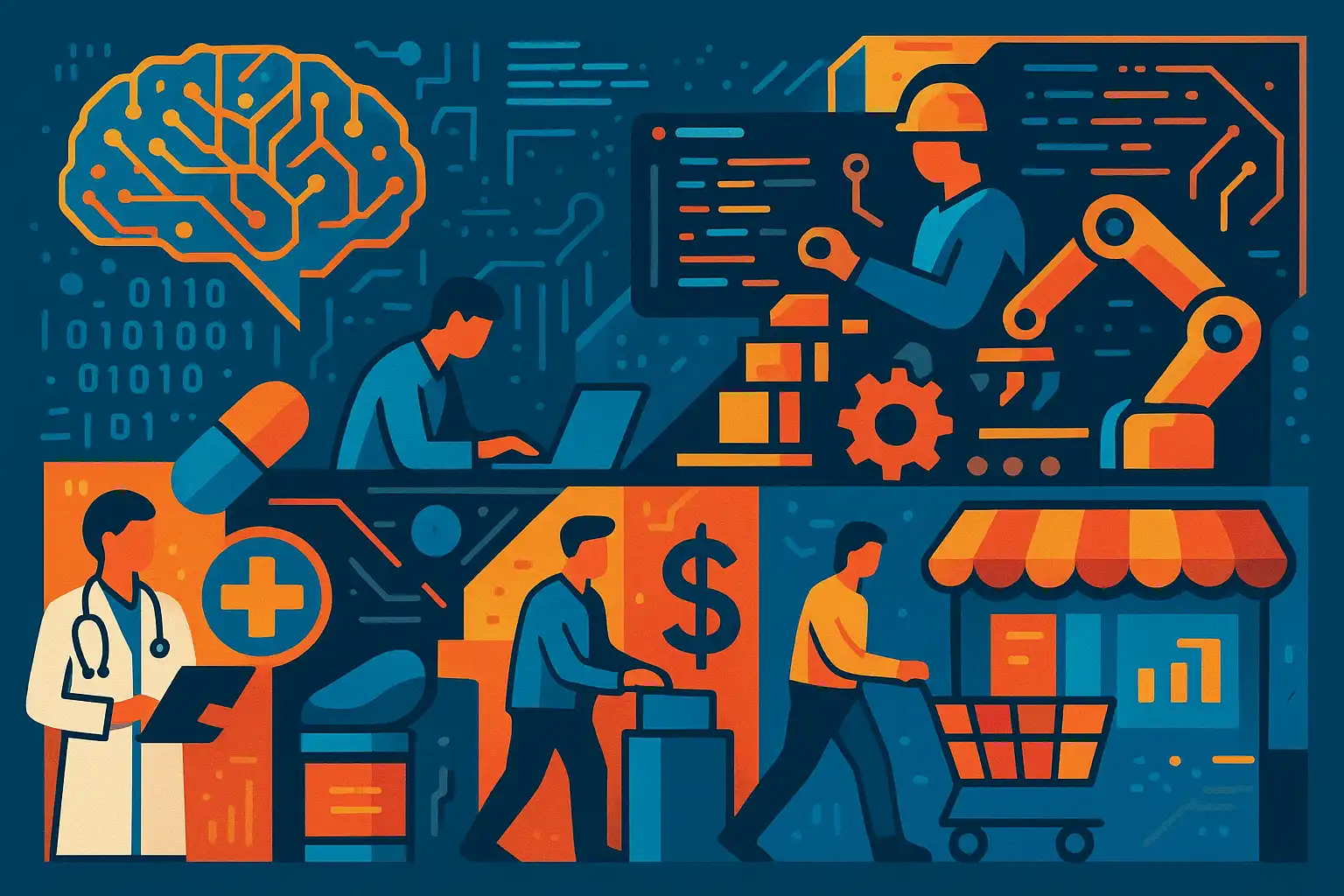
If you are searching for deep learning project topics that make a powerful impression, you are in the right place. The secret to choosing the best topic lies in picking something that challenges your skills, matches real-world needs, and showcases your understanding of modern techniques like neural networks and transformers. Right from the start, let’s explore how to select and design project ideas that stand out, whether for a portfolio, academic work, or business solution.
What makes deep learning project topics impressive?
Impressive deep learning project topics combine technical depth, creativity, and practical value. Typically, a project shines when it shows your ability to solve real problems, use the latest tools, and explain results clearly. For example, instead of repeating classic digit recognition, you might fine-tune a large language model for medical data or build a multi-lingual speech recognition system. These efforts reflect a deeper mastery and signal advanced skills to employers, educators, and peers.
One key factor is relevance. If your topic addresses current industry challenges or explores new technology—like diffusion models for image generation—it will naturally attract more attention. Additionally, showing the end-to-end process—from data collection to model deployment—demonstrates you understand how to bring ideas to life, not just code experiments.

Which deep learning project topics show advanced skills?
The most advanced deep learning project topics involve either novel applications, complex architectures, or state-of-the-art techniques. Here are some project topics that illustrate high-level skills and set you apart:
- Fine-tuning Large Language Models (LLMs): Adapting open-source LLMs such as GPT-OSS or MedGemma to specialized datasets (like financial or medical records) proves you can handle huge models and unique data challenges.
- Multi-Lingual Automatic Speech Recognition (ASR): Building ASR systems with Transformer architectures highlights your knowledge of sequence modeling and the intricacies of attention mechanisms.
- Sophisticated Classifiers with Keras: Developing E-Commerce Clothing Classifier models to automate product tagging or recommendation is a solid way to link deep learning to business outcomes.
- Reinforcement Learning for Service Desk Tickets: Using reinforcement learning to classify or route IT service desk tickets shows problem-solving applied in organizational settings.
- Generative Modeling: Fine-tuning diffusion models, like Stable Diffusion XL, using DreamBooth and LoRA, pushes you into the frontier of generative AI, where creativity and technical depth unite.
When planning such a project, remember to explain your choices and compare baseline solutions to show the impact of your advanced approach.
How can deep learning projects solve real-world problems?
The best deep learning project topics are those that go beyond academic interest and deliver real solutions. To do this, follow a structured workflow:
- Define the Problem Clearly: Choose a challenge with business or social relevance—like automating call center transcriptions or detecting fake news.
- Data Collection and Preparation: Gather a large, diverse dataset relevant to your problem. Clean, label, and preprocess the data to boost accuracy and fairness.
- Model Selection and Training: Pick the right neural network architecture (CNNs, RNNs, transformers, or diffusion models) and tune hyperparameters for the task.
- Evaluation: Use solid metrics—such as F1 score, AUC, or RMSE—to measure how well your model performs against benchmarks.
- Deployment: Deploy your model in a realistic setting (web, mobile, or cloud) and plan for continuous monitoring, updating, and retraining.
This approach ensures your deep learning project does not just sit in a notebook, but solves real needs for users or organizations. As an example, if you plan to build ML model prototypes for quick testing in production, this workflow will keep your focus on actual business impact.
What are some innovative deep learning project topics for showcasing advanced skills?
It’s essential to select project ideas that not only reflect innovation but also give you a chance to work with the latest trends and frameworks. Here are a few innovative project ideas that can make your portfolio shine:
- Healthcare Deep Learning: Apply deep learning to medical image analysis (MRI or X-ray scans), patient risk prediction, or rare disease detection. Fine-tune models like MedGemma for these tasks.
- Fine-Tuning for Specific Domains: Customize GPT-OSS or other LLMs on legal, clinical, or scientific datasets to develop powerful, domain-specific chatbots or summarizers.
- Multi-Lingual Speech and Text Models: Build advanced ASR or translation tools that support multiple languages, using transformers for both text and speech.
- Product Recommendation Systems: Use deep learning to create smarter recommendation engines for e-commerce, blending product image classification with user behavior modeling.
- Deep Generative Art: Experiment with tools like DreamBooth, LoRA, and Stable Diffusion XL to generate creative art, photorealistic images, or branded visuals for marketing.
- Autonomous Driving Perception: Build perception modules for self-driving cars, applying object detection and segmentation on real-world road data.
- Reinforcement Learning Agents: Design an agent that learns to optimize warehouse robot movement or game strategies through trial and error.
Each of these projects highlights your ability to apply the latest deep learning research and tools to solve unique or complex challenges.
Structuring Deep Learning Projects for Maximum Impact
After identifying your topic, structuring your project is key. This involves presenting not just the technical details, but also the thought process, results, and business relevance. For students or early-career professionals, engaging in a free data science bootcamp can help sharpen these skills and expose you to peer feedback.
Be sure to document your code and results thoroughly, use visualizations to communicate findings, and, if possible, publish your work on GitHub or a personal website. This open approach helps others learn from your journey and can attract potential collaborators or employers.
How can you align project topics with industry needs?
Aligning your deep learning project topics with real industry needs makes your work much more impressive. Start by researching what challenges are trending in your target industry. For instance, in e-commerce, demand for automated product categorization is high. In healthcare, data privacy and model interpretability are vital. In manufacturing, predictive maintenance using sensor data is a practical case.
To connect theory with practice, consider joining communities, reading recent case studies, or participating in hackathons. Encountering Data Science Challenges will open your eyes to what employers care about and help you focus your project for real-world significance. If you can, talk to domain experts to fine-tune your problem definition and data requirements.
Popular Tools and Libraries for Deep Learning Projects
Choosing the right tools can make or break your project. Popular libraries like TensorFlow, PyTorch, and Keras offer a vast range of resources and community support. For transformer-based models, you can leverage Hugging Face Transformers. For computer vision, OpenCV and scikit-image remain indispensable. Colab and Jupyter Notebooks are perfect for prototyping and sharing work, while MLflow or Weights & Biases aid in experiment tracking.
If you hit a technical snag or want to explore more advanced support, you may decide to consult with Expert Deep Learning Help to speed up your progress and polish your project delivery.

FAQ
What should I include in my deep learning project report or presentation?
Always start with a clear problem statement, your solution approach, and details about data sources. Describe the model architecture, training pipeline, and why you chose specific tools. Present results using charts and tables, discuss model limitations, and, if possible, suggest next steps or improvements. Sharing practical application examples, even if simplified, helps audiences relate to your work.
How do I choose the right dataset for a deep learning project topic?
Pick a dataset relevant to your problem and large enough for deep learning. Check public sources like Kaggle, the UCI Machine Learning Repository, or domain-specific open datasets. Clean and balance your data for fairness, and seek permissions when working with sensitive information like health records. Make sure your data variety matches real-world scenarios so your solution is robust.
Can I combine multiple models or approaches in a single project?
Yes, integrating different architectures or combining deep learning with traditional methods is common. For example, you might use a CNN for feature extraction and a transformer for sequence modeling, or blend rule-based systems with neural networks for hybrid solutions. Just document your workflow and explain why each component was chosen for clarity.
Do I need advanced hardware to start deep learning projects?
No, beginners can use free cloud resources like Google Colab, which provides access to GPUs for training models. For larger or more complex projects, consider cloud computing credits, local GPUs, or university clusters. Optimize your code and start with smaller experiments before scaling up to avoid resource bottlenecks.
